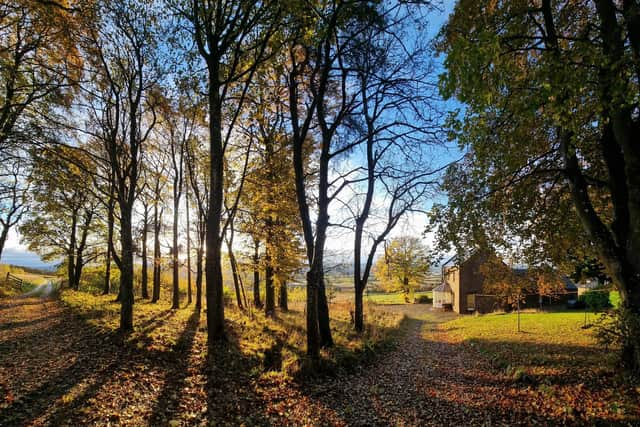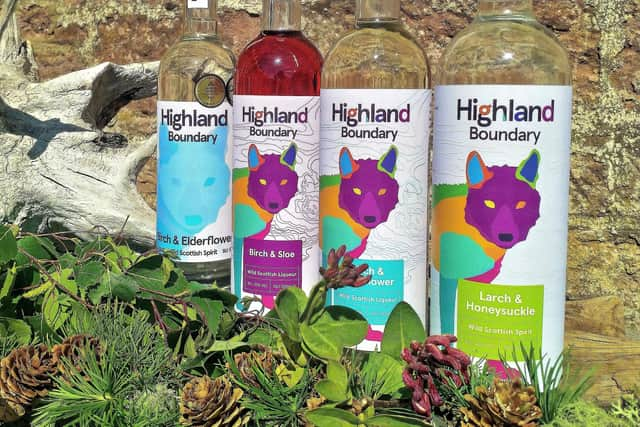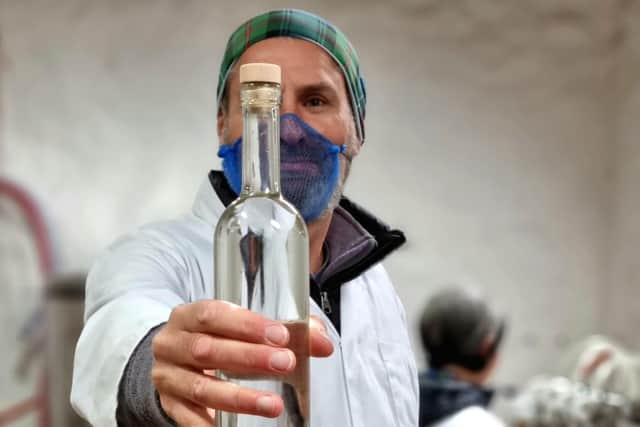Sustainable Scotland: How a craft distillery in Perthshire is bottling a taste of the wild and boosting nature recovery
Dr Marian Bruce and her husband Simon Montador have been living on a farm in Alyth, Perthshire, for the past 14 years.
The farm is situated in an enviable location, with the Angus glens and the mountains of the Cairngorms to the north and stunning views of the Strathmore valley to the south.
Advertisement
Hide AdAdvertisement
Hide AdSince moving there in 2008 they have set about restoring and rewilding the seven-acre smallholding, planting more than 600 native trees and creating hedgerows, a wildflower meadow and a wildlife pond.
They have also launched Highland Boundary, a craft distillery creating spirits and liqueurs infused with plants such as silver birch, sloe berries and elderflower which grow in the area.
“We take our inspiration from the wild flora around us on the Highland Boundary fault line, where our farm is situated,” Dr Bruce said.
“Our aim was to create a biodiversity hot-spot from which other areas could be restored.


“We use the plants we do because these are what we have growing here, either on our farm or on neighbouring woodland, where we collect botanicals under license.”
Only plants collected by the highland boundary team are used to make the drinks, ensuring that they know the exact provenance of the ingredients and ensuring they are not harvesting too much.
“We only take a small amount from each tree when we pick foliage and for berries and flowers we always leave the majority for birds and insects,” she said.
“This sustainable harvesting is key to ensuring that we are working with nature and not exploiting it and is also fundamental to foraging.”


Advertisement
Hide AdAdvertisement
Hide AdThe firm currently offers a range of four unique drinks – two spirits and two liqueurs – but there are more being concocted, including new non-alcoholic options.
Dr Bruce says inspiration for the drinks comes partly from Scandinavian, eastern European and Alpine spirits, which all use native plants to create unique flavours that represent the flora of a place.
“This is our ethos,” she said. “To use what we have growing here – and what should be here that we have reintroduced – to create spirits that are of this landscape.


“We do a lot of research into ancient recipes and historical uses of our plants.
“Much of this cultural knowledge has been lost in Scotland and we aim to restore this too, as there are multiple benefits to foraging.”
The founders have put sustainability and low environmental impact high on their agenda.
Dr Bruce said: “Our cooling water comes from a spring on Alyth Hill and is returned to our wildlife pond, maintaining the water cycle.
“We have solar PV, which generates all our electricity and our offices are heated with a biomass boiler.
Advertisement
Hide AdAdvertisement
Hide Ad“Our packaging is all glass, wood, cork and paper and contains no plastics, so that it can be easily recycled, is biodegradable or can be used as biomass.


“This has been the case from the start, in 2018, when we launched our first spirit.
“At this time it was quite difficult to get suppliers to understand that we didn’t want glossy plastic labels or lids.”
The firm has set out a commitment to reach net zero by 2045.
It is also a founding member of the Scottish Rewilding Alliance, a partnership of like-minded organisations with a mission to enable nature regeneration on a grand scale.
“The impetus for the business has always been to increase biodiversity, then the spirits came later, when we realised that we could connect people to the landscape through the flavour of our native plants in a very powerful way,” Dr Bruce said.
“We now use our brand to promote regenerative business and rewilding and reconnect people back to our ecosystems.”
Comments
Want to join the conversation? Please or to comment on this article.
